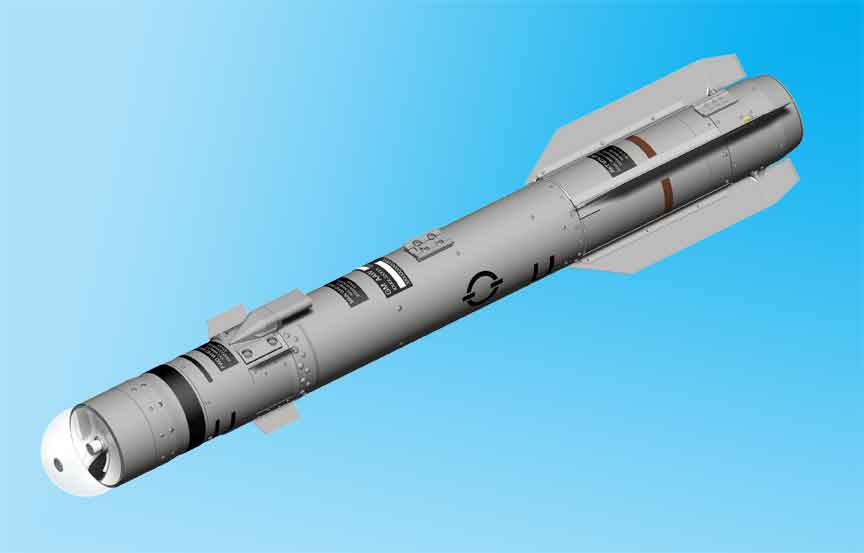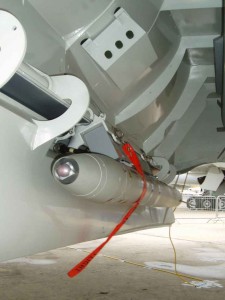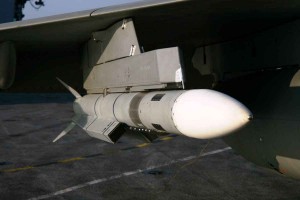MBDA offers a range of weapons for all the three forces—land, sea and air. What edge does your range of weapons offer compared to your competitors?
You’re right, MBDA is the only company in the sector capable of offering guided weapons solutions to all three of the armed forces. No other company has this ability. In fact some of our weapons have applications across the board – on air, land and sea platforms. For example our Mistral missile features in the helicopter launched ATAM system, a system that will serve to provide the aerial self-defence of India’s ALH Rudra.
The same missile is deployed from a number of ground and naval based air defence systems, including Mistral MANPADS, a product which we are offering in response to India’s VSHORAD requirement. For customers this offers flexibility, advantages in inventory management, servicing, shared through life developments and so on.
Some competitors’ products have been designed solely with their domestic customer’s very specific operational requirements in mind. Export customer requirements are often very different and MBDA’s product range reflects this. Nor our are export activities hindered by ITAR restrictions which are imposed on many products dependent on US componentry.
Of course, I would also claim that we have a number of weapons that are simply beyond compare in terms of their performance and proven operational success. Mistral I have already mentioned. MICA, which is being delivered for the IAF’s Mirage upgrade, is unique in having interchangeable seekers to dominate the full scope of air combat from short to beyond visual range. ASRAAM, selected for the IAF’s Jaguar, is the pilot’s guarantee of being able to avoid the touch and go risks of a close range aerial dogfight. These are just some examples which have positioned MBDA as a world leader, and just some of the technologies that we hope to be sharing in depth with future partners in India.
The order for MICA was placed at the end of January 2012. We have a delivery contract with the Indian Ministry of Defence and deliveries are proceeding according to schedule. As you know, the first two aircraft are being upgraded in France. The remaining aircraft in the IAF’s fleet will be upgraded in India by HAL who will also handle integration of MICA onto the Mirage, giving this already extremely effective combat platform an even greater potency for many years to come.
Looking back at 2013, how has the year been for MBDA? What are the high points and the low points in the context of Indian defence business?
2013 saw some key achievements for MBDA. We were very excited by the success we had in proving the Brimstone missile’s effectiveness as a surface to surface weapon against the FIAC (Fast Inshore Attack Craft) threat which is a growing menace in littoral waters. The MEADS air defence programme which sees us working with the US on a major new ground based air defence capability has recently carried out an extremely demanding and successful test firing, further evidence of MBDA’s skills, not only in surface to air technology but also of working in an international cooperation. The MMP land combat weapon achieved a major milestone at the end of 2013 with a notification of a contract placed for the French Army. MMP is part of a fifth generation of ATGM systems that MBDA is now working on.
Simbad-RC is an important addition to our catalogue of products as it is ideally suited for today’s naval operations and for a wide range of vessels from OPVs upwards.
At DEFEXPO 2014 we will be discussing how this could be an opportunity for a future cooperation with the Indian defence sector in the development and production of a new generation missile specifically designed for the Indian Army’s own requirements. During the year we also received our first export order for the Simbad-RC naval air defence weapon. This deploys the same, versatile Mistral missile that arms the Indian Rudra helicopter as well as the MANPADS we are proposing for the Indian Army’s VSHORAD requirement. Simbad-RC is an important addition to our catalogue of products as it is ideally suited for today’s naval operations and for a wide range of vessels from OPVs upwards. Also with regard to Mistral, 2013 saw the first production deliveries of the MPCV vehicle to a Middle Eastern customer. MPCV is a light, combat vehicle equipped with a twin Mistral launcher for very mobile air defence.
In terms of the Indian defence business, we are of course very happy that the ASRAAM air dominance weapon has been selected for the IAF’s fleet of Jaguars as part of the important upgrade programme. Of course the fact that the SR-SAM negotiations were successfully concluded and announced in the Joint Statement issued by Prime Minister Manmohan Singh and the French President François Hollande back in February 2013 was also very good news to start the year.
How has the negotiations for the SR-SAM joint development and production with India progressing? By when do you think this contract is expected to be signed? Also, provide an overview of what the naval and air versions of these missiles would be like.
The design and performance parameters of SR-SAM have been finalized for quite some time and, as has already been widely reported, negotiations were successfully concluded as mentioned in the Joint Statement issued by Prime Minister Manmohan Singh and François Hollande, the French President, in February 2013.Therefore, we would hope that a decision to proceed with system development will be forthcoming very shortly.
With SR-SAM the Indian armed forces will be equipped with a high performance, short range missile that will feature the latest advances in surface to air technology. The all-weather, vertically launched weapon will provide effective defence against a wide range of air threats from fast combat jets to cruise missiles and anti-ship missiles. It will also be a highly flexible weapon, suitable for use from mobile, wheeled and tracked systems for ground based air defence as well as for deployment as a ship-borne naval point defence system. This of course presents advantages in inventory handling as well as the shared inter-service benefits of through life upgrades if and when they become necessary.
…we have established a reputation with the Indian customer that MBDA is a trusted partner to work with, a company that delivers.
From MBDA’s perspective, SR-SAM represents a key element of our long term partnership strategy in India. This co-development project will see us supporting the DRDO which is the design lead, with the highly advanced technologies that have served to position MBDA as a recognized world leader in air defence. Our intention is that this partnership model will be the springboard for future collaborations with India.
Why does MBDA see India as its largest market outside Europe? How would you quantify that assessment in terms of market prospects?
India has played an important role in MBDA’s strategy for quite some time. In fact we can look to a history of working together stretching back some 50 years. During this time we have gained a very good understanding of how to operate within this important market, additionally we have forged very good relationships with the army, air force and navy. I also believe that we have established a reputation with the Indian customer that MBDA is a trusted partner to work with, a company that delivers.








